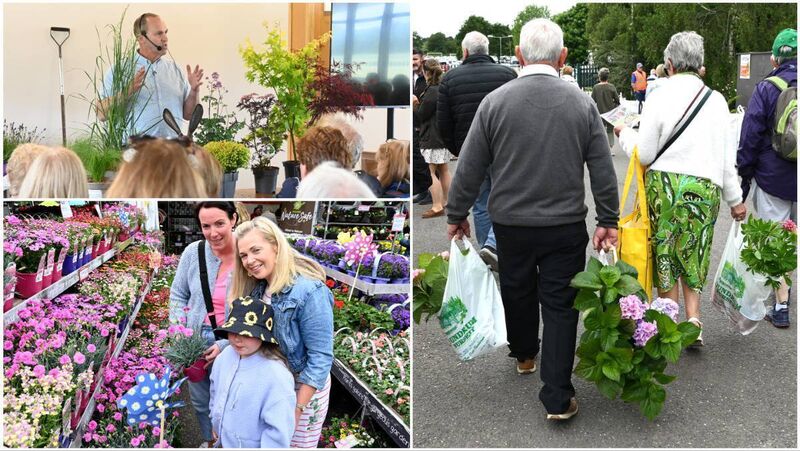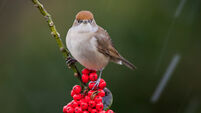Peter Dowdall: Action stations at Mallow Home & Garden Festival
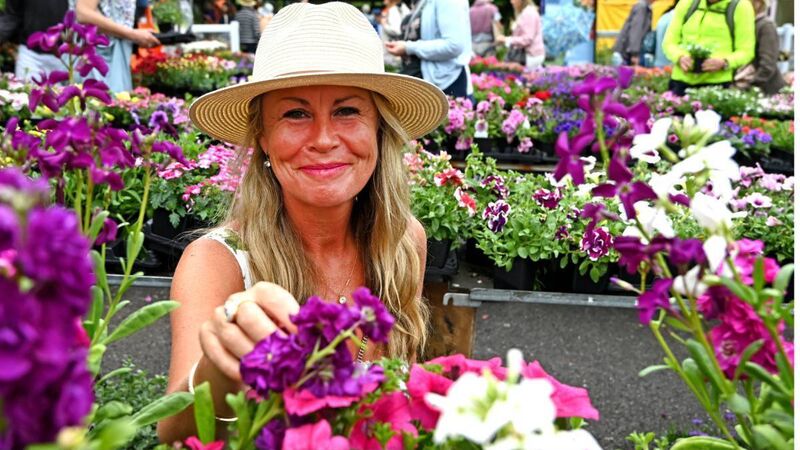
Lisa Donovan, Inniscarra, at Mallow Home & Garden Festival 2025 at Cork Racecourse. Pictures: Eddie O'Hare
As the days lengthen and the sun shines brighter, gardens have once more taken centre stage, but with the increasing unpredictability of our weather, long dry spells followed by sudden downpours, it's becoming clear that our traditional approaches to gardening may need a rethink.
This year's Chelsea Flower Show echoed that sentiment, showcasing designs and plant selections that embrace resilience and sustainability.
The focus on drought-tolerant plants was noticeable. The Karoo Garden, inspired by South Africa's semi-desert, showcased succulents and hardy species suited to arid conditions.
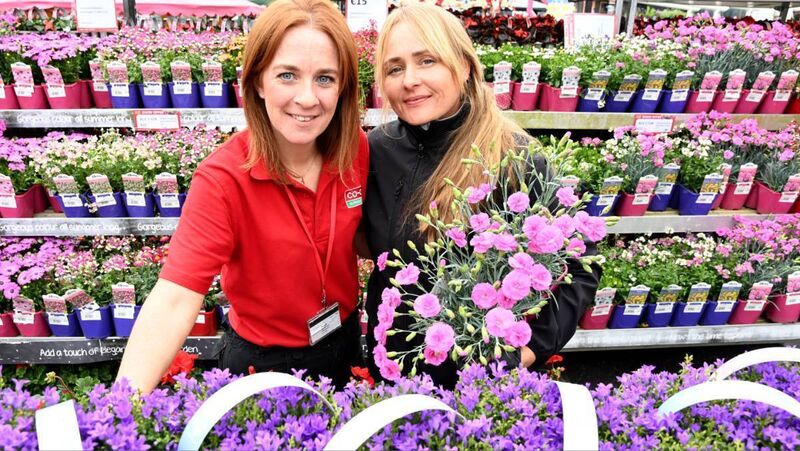
More locally, the Garden of the Future featured dry-resistant plants like rock rose, Cistus × purpureus and chickpeas Cicer arietinum.
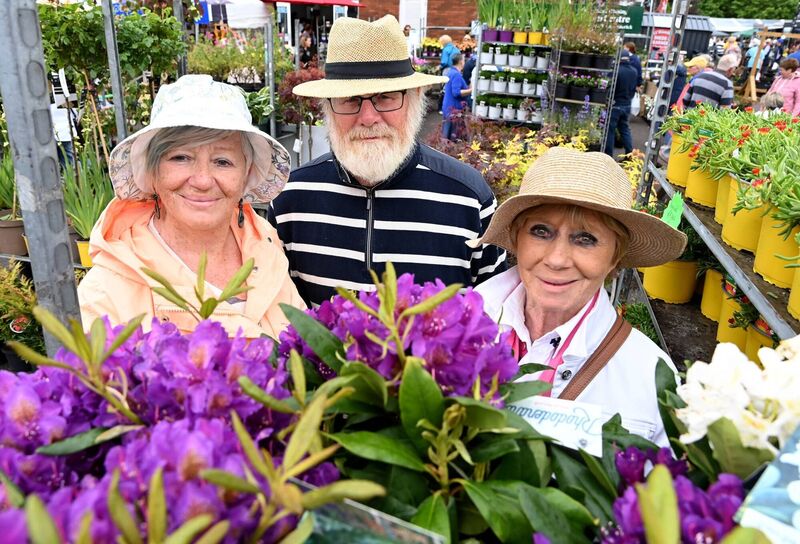
Adding these plants to our gardens doesn't mean compromising on beauty. The Sally Holmes rose, with its large white blooms, was a highlight at Chelsea, showing that elegance and hardiness can coexist. Likewise, the Allium siculum, or Sicilian honey garlic, with its bell-shaped flowers, adds structure and thrives in drier soils.
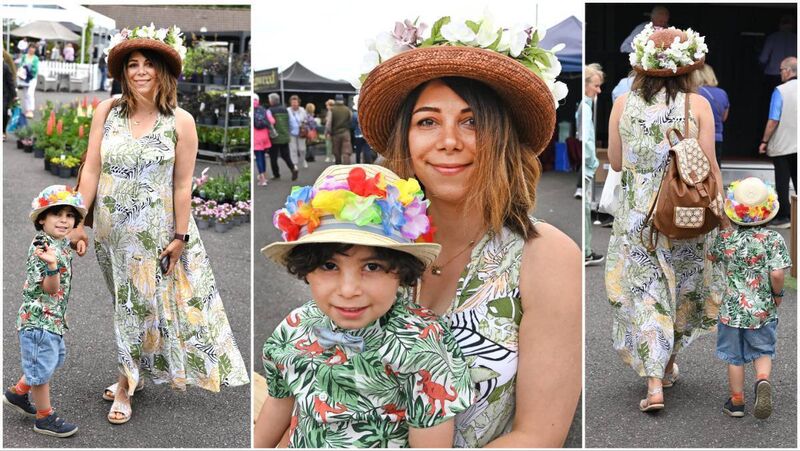
Garden design was key to water-wise gardening at the show. Naturalistic planting, gravel paths, and mulch helped retain soil moisture and cut down on extra watering. Raised beds and containers improved control over soil and drainage.
Adapting gardens by starting with small changes can be effective. Adding drought-tolerant plants, using mulch to retain soil moisture, and adjusting watering routines are all practical steps.
The Chelsea Flower Show illustrated that these modifications can create sustainable yet visually appealing and interesting gardens.

Bringing such inspiration down to earth and into our own hands, as always, was Mallow Home & Garden Festival, which unfolded from Friday, May 23, to Sunday, May 25, at Cork Racecourse.
It was a “real” show experience as festivalgoers walked through the gardens, smelled the flowers, and growers and designers gave us an insight into their work, before garden-lovers packed their car boots with their plant purchases.
After attending, people didn’t just take home tools, furniture and crafts, but clever design ideas for inside and out, as over 200 exhibitors showcased everything from home improvement solutions to artisan food and drink.
The 25 stunning show gardens offered ideas that work in real gardens here in Ireland.
What I love about the Mallow festival is that it is, in essence, a local show supported by Irish businesses and gardeners. Gardening is at the core of this show, and the gardening element is getting stronger each year. The quality and range of nurseries exhibiting at the show is second to none in Ireland.
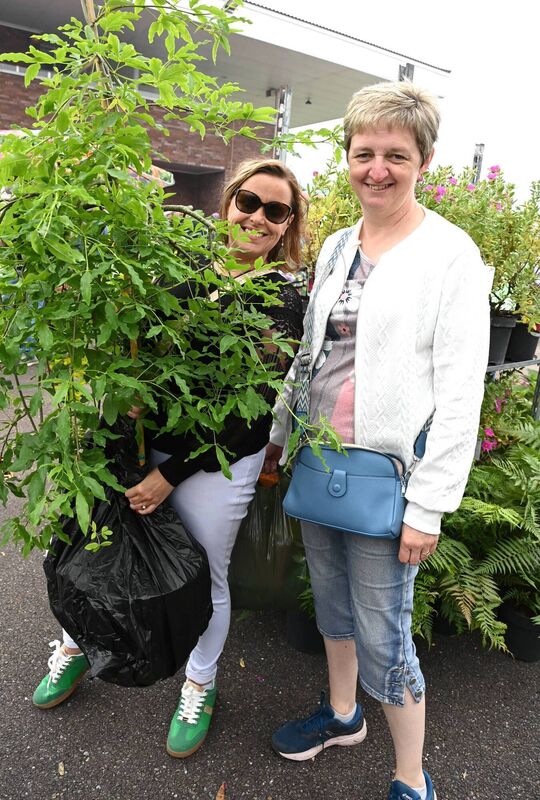
The gathering of Irish Specialist Nursery Association members, in the stables area of the racecourse, provided us with the opportunity to snap up rare gems not to be seen in a standard garden centre.
For me personally, one of the best parts of the weekend is the series of free gardening talks and demonstrations, and, along with my good friend Paraic Horkan, I enjoyed sharing knowledge as we covered everything from planting combinations to garden design, and pest control to pollinator-friendly practices and resilient gardening.
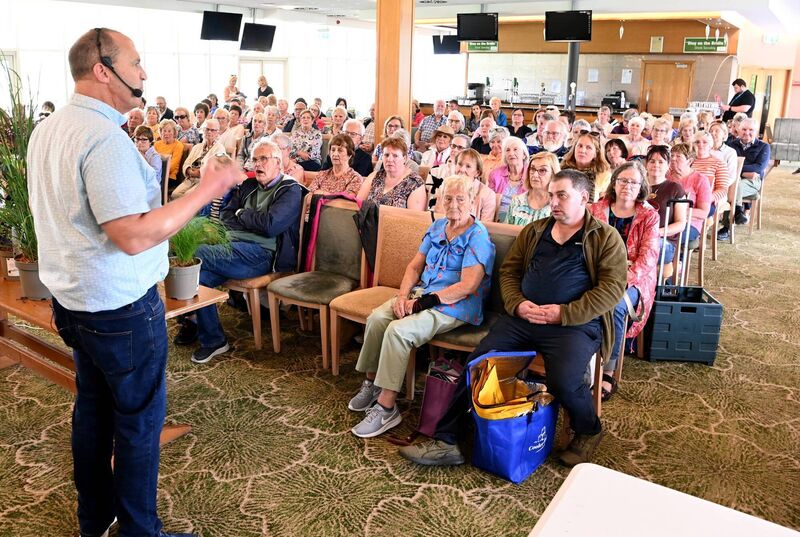
All in all, as we head into the warmer months, perhaps it's time to take a leaf out of Chelsea Flower Show's book and embrace this more resilient approach.

After all, a garden that can weather the extremes is one that will continue to bring joy, come rain or shine.
But let's be honest, the idea of a drought-resilient garden can conjure up images of dry gravel beds and lifeless, beige expanses. The reality, though, couldn't be further from that, especially if you draw a little inspiration from the likes of the show gardens at Chelsea this year.

There was colour, texture, and even romance in many of the drought-leaning plant choices, with designers managing to capture wildness and beauty without sacrificing resilience.
Take, for example, the widespread use of achillea in warm golds, apricots, and pinks. This plant not only thrives in dry, free-draining soil, but it also attracts pollinators in droves and holds its own structure beautifully well into autumn.
And then there were the swaying grasses, things like Stipa tenuissima and Sesleria autumnalis, both light and airy, drought-hardy, and full of gentle movement that brings a garden to life even when everything else seems to be wilting.
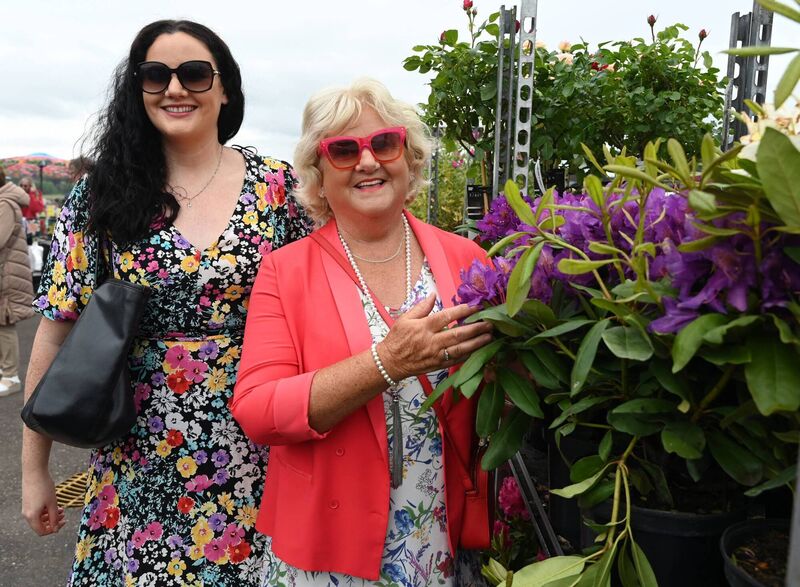
One of the key things to understand is that drought-resilient doesn’t mean bone dry. It’s more about reducing the need for constant intervention. Instead of daily hosepipe sessions and feeding schedules, you’re building a system that’s balanced, where plants cope, soils retain just enough moisture, and every drop of water does its job.
The soil, really, is the foundation of it all. In much the same way, a healthy gut leads to a healthy body; good soil will set you up for a thriving garden with far less effort.
Adding organic matter, compost, leaf mould or well-rotted manure not only improves the structure of the soil, allowing it to retain more moisture during dry periods, but also helps it drain properly when the heavens do finally open. Mulching that improved soil with bark, straw, or even gravel, depending on your preferred look, helps to lock that moisture in and reduce evaporation.
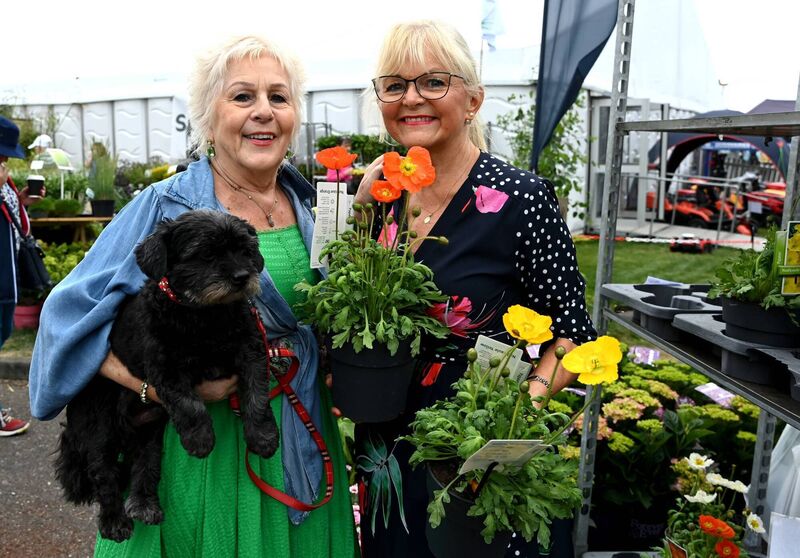
There’s also something to be said for planting density. In many of the Chelsea gardens this year, we saw a move away from the isolated specimen planting of decades past, in favour of layered, naturalistic groupings. When plants grow close together, they create a microclimate at soil level, with less exposure to sun and wind, and more retained humidity.
Think of a patch of Salvia nemorosa underplanted with Erigeron karvinskianus, and flanked by Lavandula Hidcote.
All are sun lovers, all cope well with dryness, and together they create a tapestry that looks stunning while working to support itself.
Another subtle but important tip: water less often, but more deeply.
A light sprinkle each evening encourages shallow roots, which are far more vulnerable during hot weather.
But a deep soak once or twice a week, ideally in the early morning or late evening, teaches roots to grow downwards, tapping into moisture further below the surface. It’s about changing our habits as gardeners, not just changing the plants.
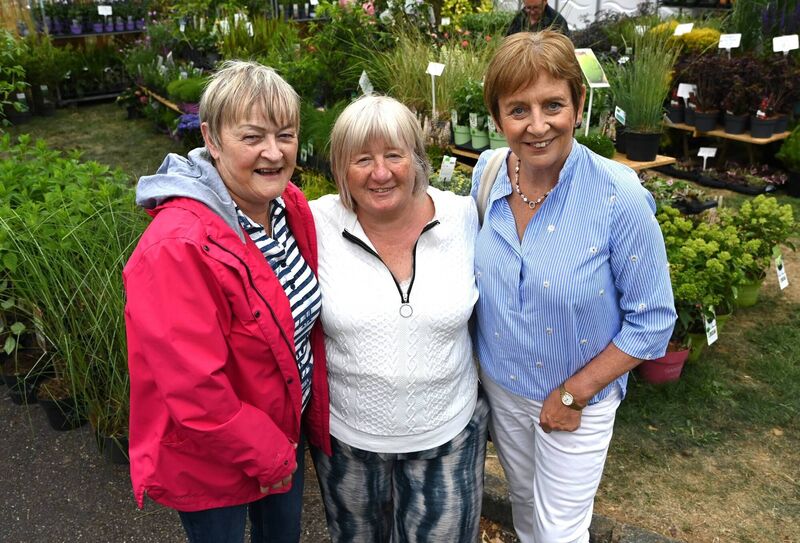
And while we’re changing habits, it's worth taking a moment to think about the thirsty parts of the garden we’ve accepted without question. Lawns are a good example.
They’re often the most water-demanding part of the garden and arguably the least useful to wildlife. Instead of a monoculture of grass, could that space become a mini meadow? Or at least tolerate a bit of clover and selfheal, which not only require less watering, but also support pollinators and improve soil health?
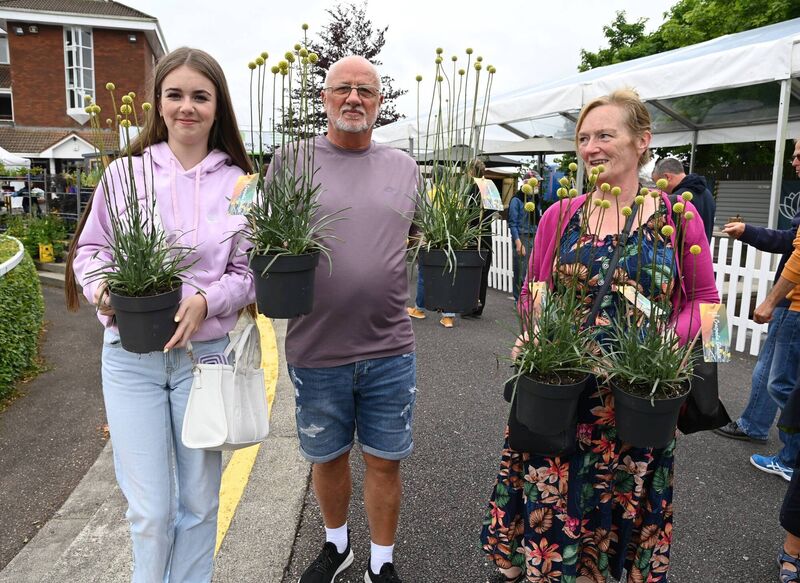
One of the show gardens this year took exactly that approach. Rather than presenting the perfect green lawn, it featured a blend of native wildflowers, yarrow, and low-growing thyme, creating a soft and textured mat that hummed with life and barely needed a drop of extra water.
There was also a noticeable emphasis on Mediterranean-style planting. It makes sense, countries like Spain and Italy have been managing dry summers for centuries, and many of the plants that thrive there do just as well here, provided they have good drainage. Rosemary, sage, oregano, phlomis, euphorbia, all of them performed well at Chelsea and could perform just as beautifully in a dry border at home.
Ultimately, gardening with the climate rather than against it isn’t a compromise. It’s a philosophy that leads to healthier, more vibrant gardens and to gardeners who aren’t constantly battling the weather.
